Rice, the staple food that has been a cornerstone of diets across the globe for centuries, possesses an incredible ability to transform any meal into a satisfying culinary experience. From fluffy basmati to hearty brown rice, a variety suits every palate. However, achieving flawless, perfectly cooked rice can sometimes be challenging.
Meet the rice cooker. The era of worrying about water-to-rice ratios, inconsistent cooking, and sticky pots has come to an end. The rice cooker has revolutionized home cooking, simplifying the rice preparation process while consistently delivering excellent results. Whether you're an amateur cook or a seasoned kitchen expert, harnessing the power of a rice cooker can make a world of difference in your culinary creations.
In this post, we will share the secret to the perfect rice texture and provide step-by-step instructions on how to use a rice cooker to get the perfect rice every time.
How To Use A Rice Cooker
Using a rice cooker simplifies the process of cooking rice to perfection, while advanced models offer an array of functionalities that extend far beyond basic rice cooking.
First, measure your uncooked rice with the cup provided to ensure accuracy, as rice cooker cup sizes differ from standard ones. Rinsing the rice under cold water until the water runs clear is an optional but recommended step to remove excess starch, which helps avoid clumpy or sticky rice. Then, add water to the rice in the rice cooker pot, adhering to the specific water levels marked on the inner pot, which vary based on the cooked rice type.
Once you've prepared your rice, select the appropriate setting on your rice cooker if it has multiple options. These settings adjust cooking times and temperatures to cater to different types of rice, such as white, brown, or sushi rice, ensuring optimal results for each variety. After selecting the setting, simply close the lid, plug in the rice cooker, and initiate the cooking process. The appliance will automatically cook the rice and switch to "keep warm" mode after completion.
Advanced rice cookers boast a range of settings that further showcase their versatility. Options like "Quick Cook" for speedier preparation, "Steam" for steaming vegetables or fish, and even "Cake" for baking, transform the rice cooker into a multi-functional kitchen tool. Some models also feature settings for slow cooking and preparing soups, expanding the possibilities of what can be achieved with just one appliance.
To make the most of your rice cooker, consider experimenting with water ratios to find the perfect texture and explore its capabilities beyond rice by trying recipes for quinoa, oatmeal, or risotto. Most rice cookers have a "keep warm" setting, and this function is particularly useful for maintaining the rice at an ideal serving temperature without overcooking, though it's best not to leave rice in this mode for too long to avoid drying it out.
Cleaning and maintenance are straightforward—allow the rice cooker to cool before cleaning, and note that the inner pot and any removable parts are usually dishwasher safe. However, it's wise to consult your model's instructions for specific care guidelines.
Understanding Different Rice Cooker Settings

White Rice: This setting adjusts cooking time and temperature to produce fluffy white rice. It's the most commonly used setting.
Brown Rice: Brown rice requires more water and a longer cooking time to soften the bran layer. This setting accounts for those needs.
Sushi Rice: The sushi rice setting adjusts for a firmer texture that's ideal for sushi; slightly less water is used compared to the white rice setting.
Quick Cook: This setting cooks rice faster when you're in a hurry, though the texture may not be as perfect as the standard settings.
Steam: Some models come with a steam basket, allowing you to steam vegetables, fish, or dumplings while cooking rice or independently using the steam function.
Slow Cook/ Multicook: Advanced models may feature a slow cook setting, enabling the rice cooker to function like a slow cooker for soups, stews, and other slow-cooked dishes.
Cake/Bread: Surprisingly, some rice cookers can even bake cakes or bread, utilizing a special setting that provides the right temperature and cooking time for baking.
The Water-To-Rice Ratio

The water ratio is the most critical part of cooking rice in a rice cooker, regardless of whether you use one or not. Not all rice is the same, so you can't use the same ratio.
Consulting your rice cooker manual is essential as it provides the recommended water-to-rice ratio specific to your machine. This guarantees that you attain excellent outcomes and flawlessly cooked rice every time you use it.
However, the question remains: what water is required to cook a single cup of rice? Below is a list of the recommended ratios of rice and water, depending on the type of rice used.
Long-Grain White Rice - 1 cup of rice: 1 3/4 cups of water
Long-Grain Brown Rice - 1 cup of rice: 2 1/4 cups of water
Other Long-Grain Rice (Basmati Rice, Jasmine Rice) - 1 cup: 1 1/2 cups of water
Medium-Grain Rice - 1 cup: 1 1/2 cups of water
Short-Grain White Rice (Sushi Rice) - 1 cup: 1 1/2 cups of water
Broken Grains - 1 cup: 2 cups of water
How do these differ? Here's how rice varies depending on the grain:
Long-Grain Rice – has lower starch content, resulting in separate and fluffy grains when cooked.
Medium-Grain Rice – has a moderate starch content, leading to slightly plumper and stickier grains when cooked, suitable for dishes like risotto or sushi.
Short-Grain Rice – has the highest starch content, yielding sticky and moist grains when cooked, and is commonly used in sushi and rice pudding.
How To Cook Rice In A Rice Cooker
Using a rice cooker is simple. With convenient presets, it's as easy as pressing a button. Select the rice type, and let the rice cooker work its magic.
Add Water
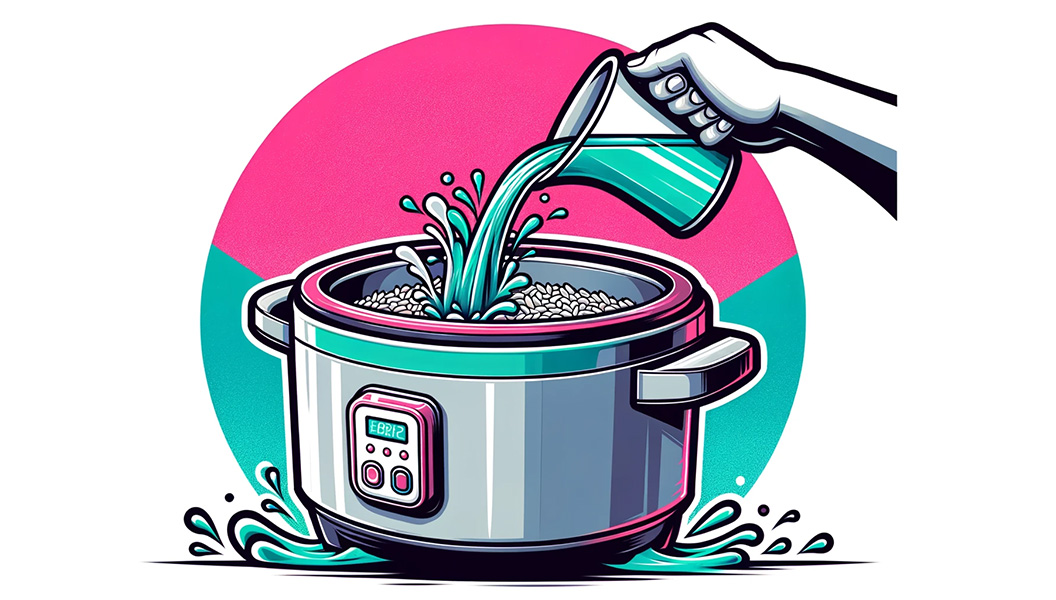
Next, add cool water to the cooking pot with the desired ratio. Reinsert the rice cooker and insert it back into the rice cooker.
Add Coconut Oil (Optional)
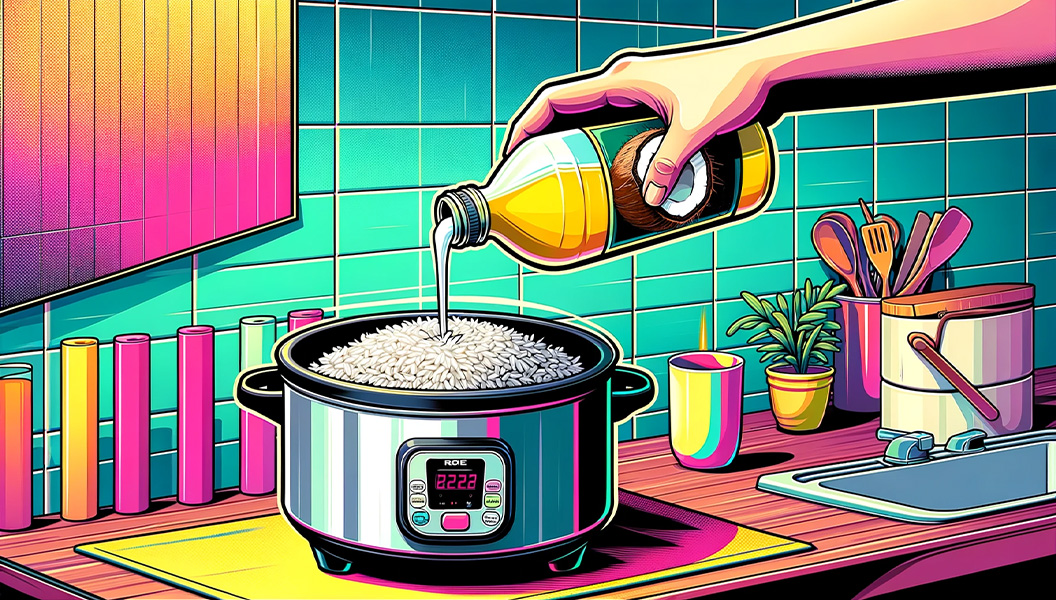
Incorporating coconut oil into rice's cooking process provides multiple advantages beyond just enhancing the flavor. Coconut oil is a versatile cooking ingredient that can infuse your rice with a delightful tropical aroma and taste but also brings potential health advantages.
Coconut oil adds a mild, natural sweetness and a hint of coconut flavor to rice, elevating the overall taste of your dish. Its appeal is particularly pronounced with dishes with Asian, Caribbean, or tropical influences. Including beneficial fats, like those present in coconut oil, can moderate the digestion of carbohydrates within rice. This effect could result in a gradual release of glucose into the bloodstream, aiding in regulating blood sugar levels and offering enduring energy.
Coconut oil can contribute to a smoother and slightly creamier texture in the cooked rice. It helps coat the rice grains, preventing excessive stickiness and promoting a more separate and fluffy outcome.
Switch On The Rice Cooker And Select The Right Setting
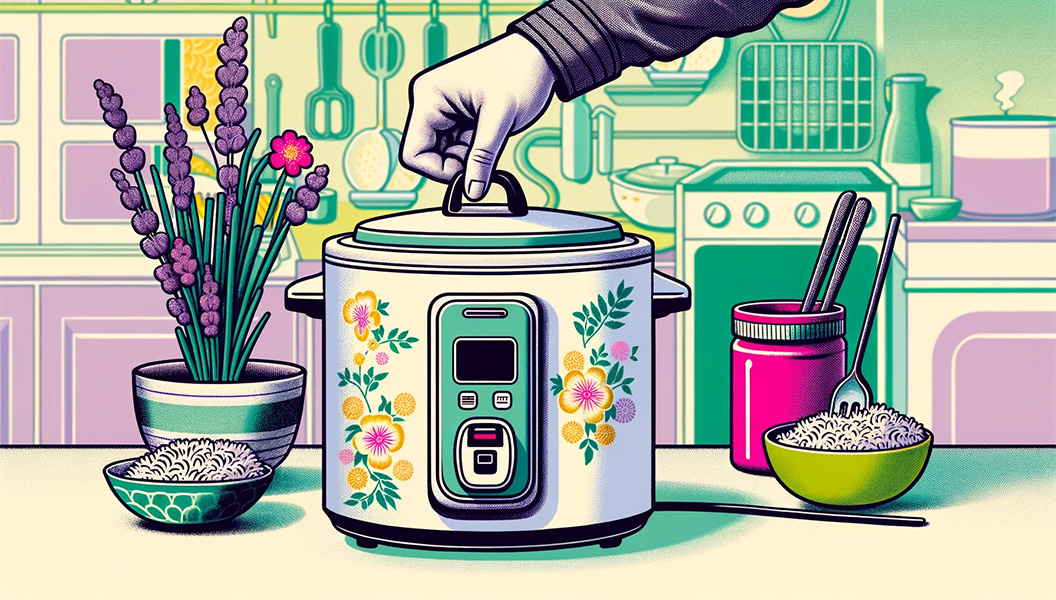
Depending on the specific model of your rice cooker, you may have a single power switch without any additional options. In that case, simply flip the switch and let it cook!
Otherwise, consult your rice cooker manual to choose the right setting. Once selected, keep the lid closed as it cooks to retain the steam. The rice cooker will notify you when it's finished cooking, typically with a beep or a light indicator.
Allow Cooked Rice To Rest
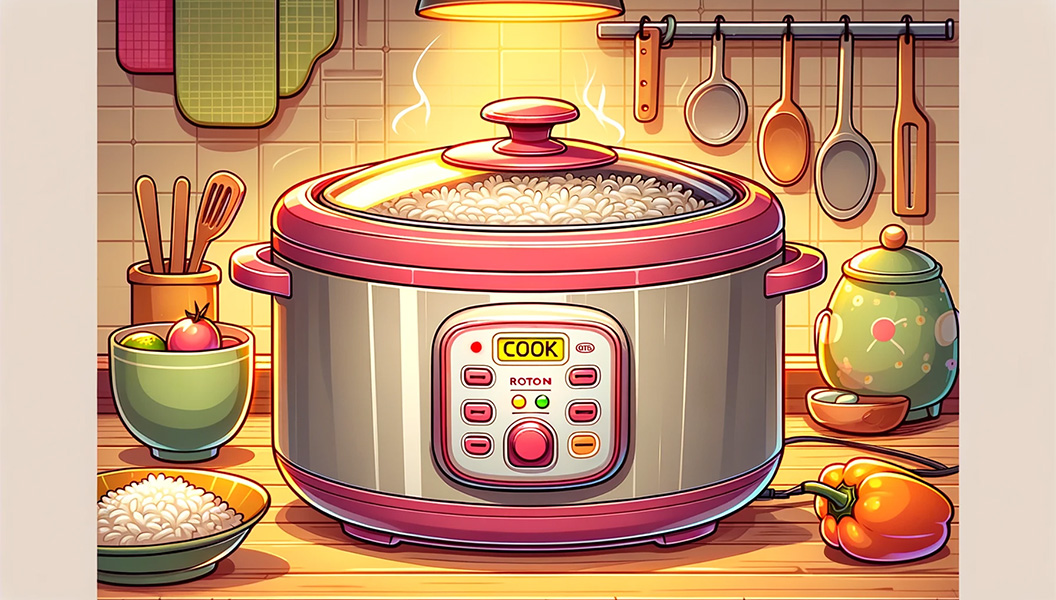
After the rice cooker indicates that the rice has finished cooking, rest for approximately five to ten minutes.
Fluff It Up With A Rice Paddle
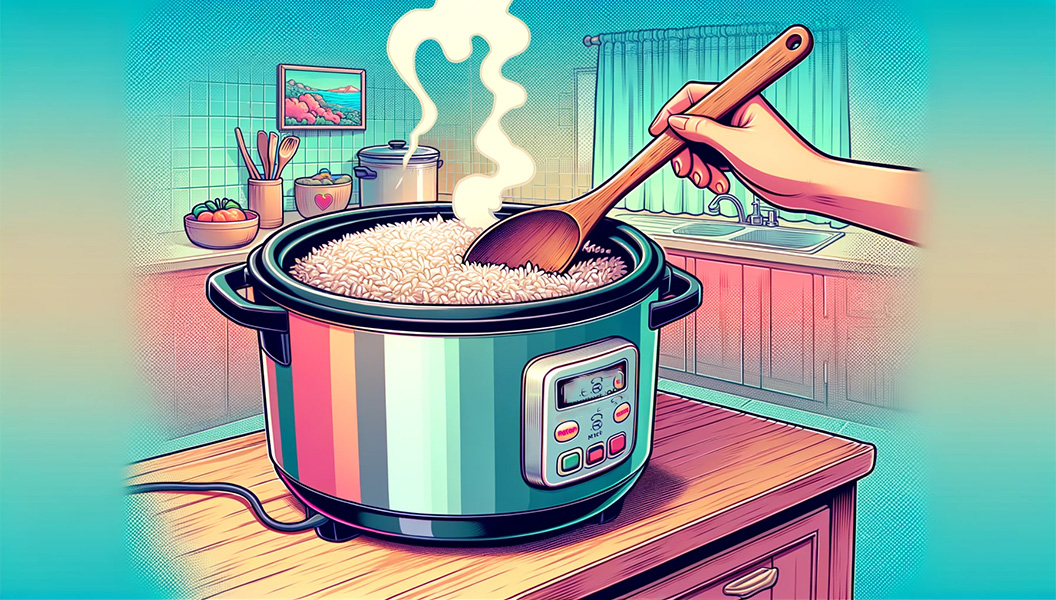
Unlock the lid and delicately loosen the impeccably cooked rice using a rice paddle. Enjoy your fluffy, steaming rice from the rice cooker!
Tips For Making Rice
Always Rinse Rice!
If you want fluffy rice (and you do, of course), then you need to remove the excess starch from the exterior of the rice grains that would otherwise make the rice gummy and gluey.
Rinsing rice also kickstarts the process of rehydration, which is particularly important when you cook bagged rice. You may need to rinse the rice more than once, but keep going until the water comes out clear after rinsing the rice.
Note that some white rice in the US is fortified with nutrients such as iron and folic acid. When you rinse the rice, these added nutrients may be washed away.
Measure The Water-To-Rice Ratio Accurately
Employ the appropriate water quantity and rely on a measuring cup. The suggested ratio is one cup of rice to two cups of water as a general guideline. Nevertheless, it's crucial to acknowledge that this proportion might differ based on the rice type. Always consult the directions on the rice packaging or refer to a dependable recipe for accurate measurements.
Avoid Mixing Grains
Avoid mixing short and long grains of rice in one pot. When you use just one type of rice, you ensure that the rice cooks evenly, which makes for a more pleasant texture. For example, you can cook short-grain brown rice mixed with short-grain white rice (like jasmine rice) or long-grain brown rice mixed with long-grain white rice.

